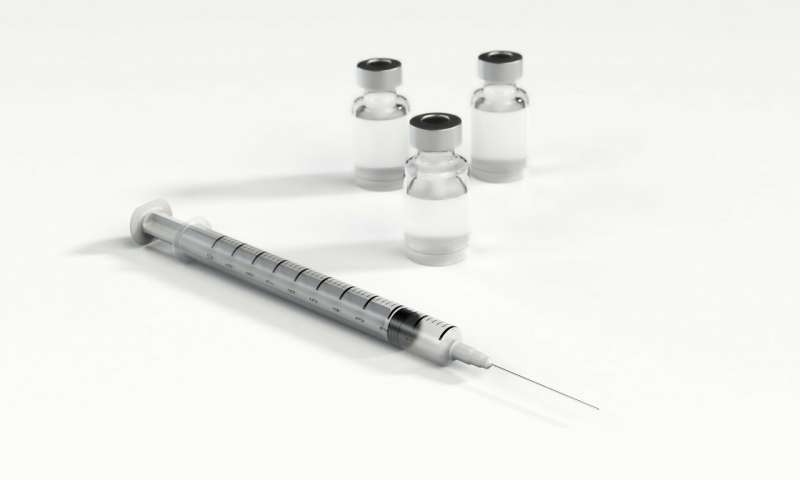This article has been reviewed according to Science X's editorial process and policies. Editors have highlighted the following attributes while ensuring the content's credibility:
fact-checked
peer-reviewed publication
trusted source
proofread
Is the US reporting system for vaccine safety broken?

A US reporting system designed to detect potential safety issues with vaccines is supposed to be user-friendly, responsive, and transparent. But an investigation published by The BMJ today finds it's not meeting its own standards.
The Vaccine Adverse Event Reporting System (VAERS), co-managed by the US Centers for Disease Control and Prevention (CDC) and the Food and Drug Administration (FDA), collects reports of symptoms, diagnoses, hospitalizations, and deaths following vaccination that might indicate a possible safety concern about a vaccine, explains journalist Jennifer Block.
It relies on a mixture of voluntary adverse event reports from doctors and patients and mandatory reporting from vaccine manufacturers, which are required by law to report all adverse events of which they are aware.
According to VAERS' standard operating procedure for COVID-19, reports must be processed quickly, within days of receipt.
But The BMJ has learned that in the face of an unprecedented 1.7 million reports since the rollout of the COVID-19 vaccines, VAERS staffing was likely not commensurate with the demands of reviewing serious reports submitted, including reports of death.
Freedom of Information Act (FOIA) documents seen by The BMJ suggest that Pfizer has more than 1,000 more full-time employees than the CDC, despite the latter's responsibility for handling adverse event reports for all manufacturers.
What's more, other countries have acknowledged deaths "likely" or "probably" related to mRNA vaccination, whereas the CDC, which says it has reviewed nearly 20,000 reports (far more than other countries) hasn't acknowledged a single death linked to mRNA vaccine.
The BMJ has spoken to more than a dozen people, including a number of physicians and a state medical examiner, who have filed VAERS reports of a serious nature on behalf of themselves or patients and were never contacted by clinical reviewers, or were contacted months later.
Some were told conflicting information about updating their report or discouraged from making a report altogether.
A group of physicians and advocates has met multiple times with representatives of the FDA between 2021 and 2022 to express their concerns that the system is not operating as intended and signals are being missed.
In response to several questions about these meetings and the issues raised therein, the FDA responded by email that the agency "is actively engaged in safety surveillance of these vaccines to identify and address potential safety concerns" and that "physicians and epidemiologists from the FDA and CDC continuously screen and analyze data from VAERS for COVID-19 vaccines to identify potential signals that would indicate the need for further study."
The BMJ has also found that the FDA and CDC essentially maintain two separate VAERS databases—a public-facing database containing only initial reports, and a private, backend system containing all updates and corrections—for example, a formal diagnosis, recovery, or a death.
CDC told The BMJ that this was to protect patient confidentiality. Yet, interestingly, Block notes that the FDA's adverse event reporting system (FAERS), which collects reports on drugs, does maintain a publicly accessible database that undergoes updates, as does the Medical Device Reporting system, raising the question of why VAERS can't do the same.
Neither the CDC nor the FDA provided an explanation. An FDA spokesperson told The BMJ that "patients can submit formal requests under FOIA to obtain the full record of their report."
For serious cases, reporters to VAERS are supposed to receive emails prompting them for updates. It includes a code and upload link, but reporters The BMJ spoke with didn't get confirmation emails, and if they search for their report in the database it will remain unchanged. Similarly, if a reporter successfully treated their diagnoses and improved, or confirmed that the cause for their illness was unrelated to a vaccine, that would not be reflected in the public database.
Narayan Nair, the FDA division director who oversees VAERS, acknowledged in a meeting with advocates that people get frustrated when they look for an updated report, find the original untouched, and feel like they're "being ignored."
"They never see it on the front end, because we don't alter that initial report," Nair explained.
More information: Investigation: Is the US's Vaccine Adverse Event Reporting System broken?, The BMJ (2023). DOI: 10.1136/bmj.p2582




















